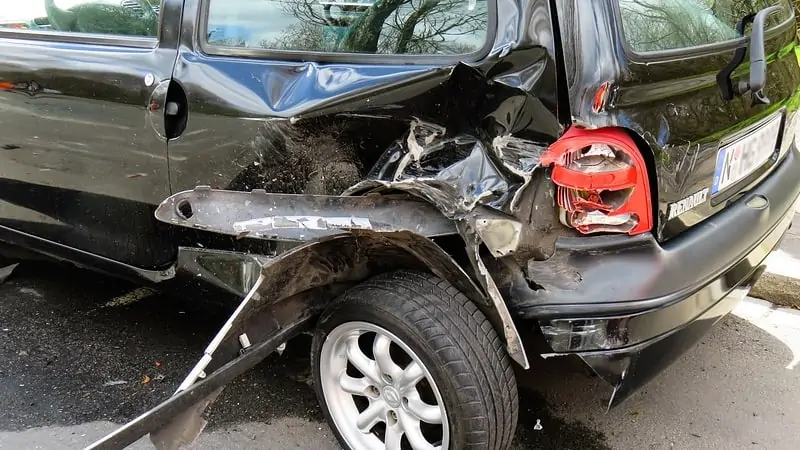Before airbags, accidents resulted in millions of fatalities. Since their mandatory installation in vehicles, frontal airbags have saved over 50,000. But, cars are not only hit from the front. When hit from the rear, do airbags deploy?
Frontal airbags rarely deploy when cars are hit from the rear because of the dynamics involved in their deployment. The National Highway Traffic Safety Administration (NHTSA) says more than the speed of a car, the location of impact is a stronger indicator of whether an airbag deploys.
In this article, I will look at how rear-end collisions differ from other types. Also discussed is whether airbags deploy in rear-end collisions and the collision in which airbags deploy.
How Is a Rear-ended Collision Different from Other Types?

In the US, there are over 2 million rear-end collisions per year. They usually occur when drivers are following too closely, distracted, or speeding more than the other cars on a road. Hot spots for rear-ended collisions are at stop signs, in traffic, and at red lights. Wet or icy roads increase the risk of rear-end collisions.
The major difference between rear-ended collisions and other types is how the front seat occupants get hurt. Whiplash is the most common injury seen in these accidents. This is how it occurs:
- The force of the crash pushes the car forward.
- The frontal acceleration of the car causes the body to move backward, pressing into the sea of the car.
- The head is stretched as far as it can go in a backward direction. It may bump into the headrest.
- After a backward stretch, the head snaps forward to produce the “whiplash” movement.
The muscles and tendons in the neck can tear from this forceful motion. The risk of injury also increases if you are facing the left or right at the moment of impact. Your head shouldn’t be moving forward when it is turned to one side.
Even in the rare instance that a frontal airbag deploys, the head can still hit other objects like the window. Headrests offer excellent protection for your head, neck, and spine in these collisions. You should not set it too low or too high because your back and neck could be overextended.
Another difference between rear-end collisions and others is how difficult it is to identify the damages that occur. Your car might look perfect after a minor crash, but some issues might be lurking.
Alignment problems are some of the unseen issues that arise after a rear-end collision. If your car gravitates in one direction as you drive, it may have alignment issues. The suspension system may also be damaged, giving rise to an unusually bumpy ride and loss of steering control.
Do Airbags Deploy When Hit from the Rear?
One of the most common types of accidents is rear-ended collisions. Given the frequency of occurrence, you would think that cars have adequate safety measures to protect all occupants in these accidents. Unfortunately, airbags deploy under certain conditions, and the events in a rear-ended collision do not meet them.
For frontal airbags to deploy in a crash, these criteria must be met:
- The car must be moving at a speed of over 25km/h.
- The deceleration must happen quickly enough to trigger the airbag sensors.
- The location of impact must be within reach of the airbag sensors: near-frontal collision or a full-on frontal collision.
Also, frontal airbags are there to protect against hitting the steering and dashboard. As earlier stated, the movements in a rear-end crash do not pose the risk of hitting the steering and dashboard.
Despite frontal airbags providing no additional protection for the driver and front passenger, curtain airbags located in the rear windows protect people in the back seats during rear-end collisions. Rear-seat airbags are a recent development and are only available in the 2021 Mercedes S-Class.
Frontal airbags rarely deploy in side collisions, but they may deploy if the collision produces enough forward acceleration to trigger the airbag sensors.
In What Type of Collision Do Airbags Deploy?

Even inexpensive vehicles come with an average of 4 airbags. Two frontal airbags are compulsory. Side-impact airbags are optional, and many people might not know the advantages of installing them.
A car must hit a solid barrier at about 11 to 15 miles per hour or hit another car at about 25 miles per hour before frontal airbags will deploy. It is easy for front-end collisions to meet this speed criteria. Additionally, the airbag sensors are in front of the car, and this makes it easy for them to pick up changes in acceleration.
The type of collision influences airbag deployment. You already know that rear-end collisions do not deploy frontal airbags. Here is a list of other types of airbags that can be deployed in collisions.
- Side airbags
The two main types are a curtain airbag that deploys from the roof and protects the head and a torso airbag that deploys from the side of the seat and protects the torso. They protect passengers in side collisions.
- Knee airbags
They have been available since the early 2000s and are located under the steering wheel. They deploy from under the dashboard in frontal collisions and protect the kneecaps from shattering.
- Front-centre airbags
They were first introduced by General Motors in 2013, and they deploy from the right side of the driver’s seat. It protects the driver and any passenger beside him during side crashes, and it also provides some benefits in rollovers.
- Inflatable seat belts
They are not exactly airbags, but they deploy like normal airbags and provide a measure of protection during collisions. Only select cars have them. They do not cushion the body like airbags. Instead, they dissipate the force of the accident across a greater area of the body.
Side airbags inflate faster than frontal airbags, and they stay inflated for a long time after deployment. According to tests conducted, side airbags do not cause severe injuries in children.
Airbags provide some protection in collisions, but you can increase your safety by practising good driving habits and obeying traffic regulations.

